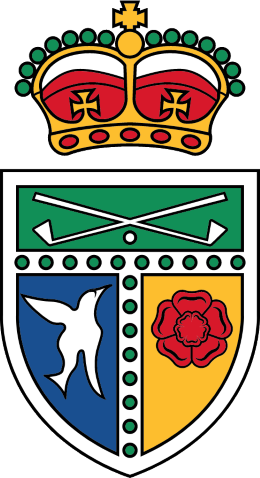
Temporary Local Rules - Valid until further notice
NO PLAY ZONES
The areas defined by white stakes and/or white lines and any of the following:
- 5th Hole - Newly seeded areas beyond the semi rough (left)
- 14th Hole - All roped off areas & newly seeded areas beyond the green
- 18th Hole - Repaired drainlage lines left of fairway (Short left of first bunker and short left of green)
are no play zones.
Relief MUST be taken from interference by the no play zone under Rule 16.1b for Abnormal Course Conditions. The player MUST take free relief by dropping the original ball or another ball in the relief area. Reference Point: The nearest point of complete relief in the general area.
Size of Relief Area Measured from Reference Point: One club-length, but with these limits:
- Must be in the general area,
- Must not be nearer the hole than the reference point.
If a player's ball has not been found and it is known or virtually certain that the ball came to rest in the no play zone, the player may use this relief option instead of taking stroke-and-distance relief.
GROUND UNDER REPAIR (GUR)
The following areas are defined as Ground Under Repair:
- Broken ground left of 16th fairway
- All abnormal playing conditions caused by machinery (e.g. tractor ruts)
Relief MAY be taken from interference by the Ground Under Repair under Rule 16.1b for Abnormal Course Conditions. The player MAY take free relief by dropping the original ball or another ball in the relief area. Reference Point: The nearest point of complete relief in the general area.
Size of Relief Area Measured from Reference Point: One club-length, but with these limits:
- Must be in the general area,
- Must not be nearer the hole than the reference point.
If a player's ball has not been found and it is known or virtually certain that the ball came to rest in the Ground Under Repair, the player may use this relief option instead of taking stroke-and-distance relief.
Relief From Seams of Newly Laid & Cut Turf
In addition to the specific areas of abnormal course conditions defined above. If a player's ball lies in or touches a seam of cut turf or a seam interferes with the player's area of intended swing the player MAY take relief under Rule 16.1b as above. But interference does not exist if the seam only interferes with the player's stance. All seams within the area of cut turf are treated as the same seam in taking relief. This means that if a player has interference from any seam after dropping the ball, the player must proceed as required under Rule 14.3c(2) and re-drop the ball even when the ball is still within one club-length of the reference point. If after dropping for a second time the seam still interferes the player must place a ball on the spot where the ball dropped the second time first touched the ground.






